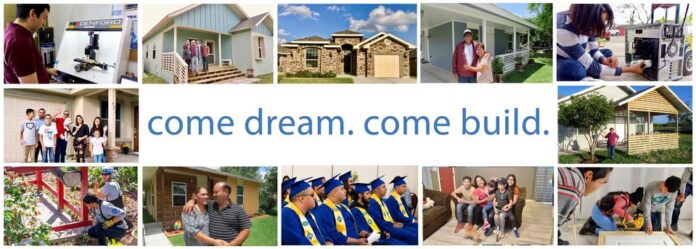Come Dream Come Build, the affordable-housing nonprofit formerly known as the Community Development Corporation of Brownsville, has been chosen by Enterprise Community Partners and Wells Fargo to receive a $2 million grant to develop an innovative, scalable solution to making housing more affordable across the United States.
CDCB was one of six winners nationwide out of nearly 900 applicants of the Enterprise-Wells Fargo Housing Affordability Breakthrough Challenge for its MiCASiTA concept, a collaboration with nonprofit architect firm BC Workshop that involves “environmentally sustainable, disaster-resilient, modular home ownership,” according to CDCB.
In addition to the $2 million, CDCB will receive $500,000 worth of technical assistance over the two-year grant period to help scale up MiCASiTA, partnering with BC Workshop to erect six prototype dwellings with construction costs at least 15 percent less per square foot than average housing units on the market, said CDCB. Also as part of the grant, CDCB plans to finalize development of Choice Empower, an online app that allows CDCB clients — in real time and with the aid of an architect — to design their own homes by choosing among various design and cost options within a particular budget.
“In real time they’re able to see what the pricing will be for various options,” said CDCB Executive Director Nick Mitchell-Bennett. “Instead of taking weeks and months in some cases they can do it right then. That not only speeds it up and make it less expensive, but it also empowers folks to say, OK, I’ve got control over this.”
The idea is for homeowners to build out their houses, adding bedrooms or expanding bathrooms and such, as their financial situations improve over time, he said, adding that CDCB can’t claim credit for what it’s calling the “grow home” concept.
“It has been tried in South America,” Mitchell-Bennet said. “It’s been tried even here in the Valley, but the problem is that it’s always been half-baked. It’s like: Here’s half a house. Go out and try to find your own money to finish it out. What we’re saying is: Here’s half a house, but you just designed a whole house, and we’re here to help you to manage to raise the money through our lending program and your hard work to get there in four years.”
MiCASiTA is itself based on CDCB’s RAPIDO disaster recovery model, in which a small house is brought in for a family to live in following a disaster, and then the house is “grown” once federal assistance arrives, he said.
“We decided some years ago, why don’t we try to do this with regular clients who are already living in a disaster? They don’t need a hurricane,” Mitchell-Bennett said, citing housing conditions in colonias, parts of downtown and Southmost.
“Why can’t we try to figure out how to make this model work for folks today? And so for about six years we’ve been tinkering with the idea, on the construction side, on the lending side, on the financial education side,” he said.
Until now the idea attracted only small grants or loans — not really enough to launch the concept, though that’s changed with the Wells Fargo grant, Mitchell-Bennett said.
“It’s going to allow us to really put a whole team of designers and builders and education folks behind this effort for two years, as well as technical assistance from whatever provider that we need, he said.
CDCB will manufacture the prototype modular houses on a 15-acre site it owns north of Brownsville, Mitchell-Bennett said.
“We’ve got ideas where we’re going to put them,” he said. “We’re working on everything from product design to product engineering, to delivery, to education, to marketing, to loan products and funding sources to fund the loan products.”
The plan is for it to be a replicable pop-up for communities where persistent poverty and housing-affordability issues exist. CDCB is actually inviting representatives from places such as the Mississippi Delta, Navajo Nation and Appalachia to be part of the design team, so that what works in the Rio Grande Valley fits just as well from a cultural perspective in those places, Mitchell-Bennett said, adding that innovative solutions for affordable housing are badly needed nationwide.
“We’ve got this housing affordability crisis,” he said. “We also have the problem that incomes are not rising as quickly as costs are rising. And at the same time, government and private philanthropy are not funding at the level that they used to fund at. … The idea is let’s try to respond to that with something that we can actually get our hands around here, and utilize the money we have today to get people out of their situation currently, and help them to build equity and wealth over the period of time they need to actually build a house out.”
Judges for the Housing Affordability Breakthrough Challenge, part of $1 billion Wells Fargo is spending through 2025 to support housing affordability solutions, were also looking for projects that addressed racial-equity and environmental considerations. Enterprise CEO Priscilla Almodovar said in a press release that housing affordability is “directly tied to racial equity and both are urgent issues fundamentally impacting every community in our country.”
Nate Hurst, president of the Wells Fargo Foundation, said that “too often good ideas are overlooked because they need expertise and resources to bring them to scale.”
“We are delighted to join Enterprise Community Partners to engage creative innovators with know-how, technical skills and imagination, who are now awarded catalytic funding to transform their housing affordability ideas into real solutions on the ground,” he said.
cdcb.org
bcworkshop.org
housingbreakthrough.org





